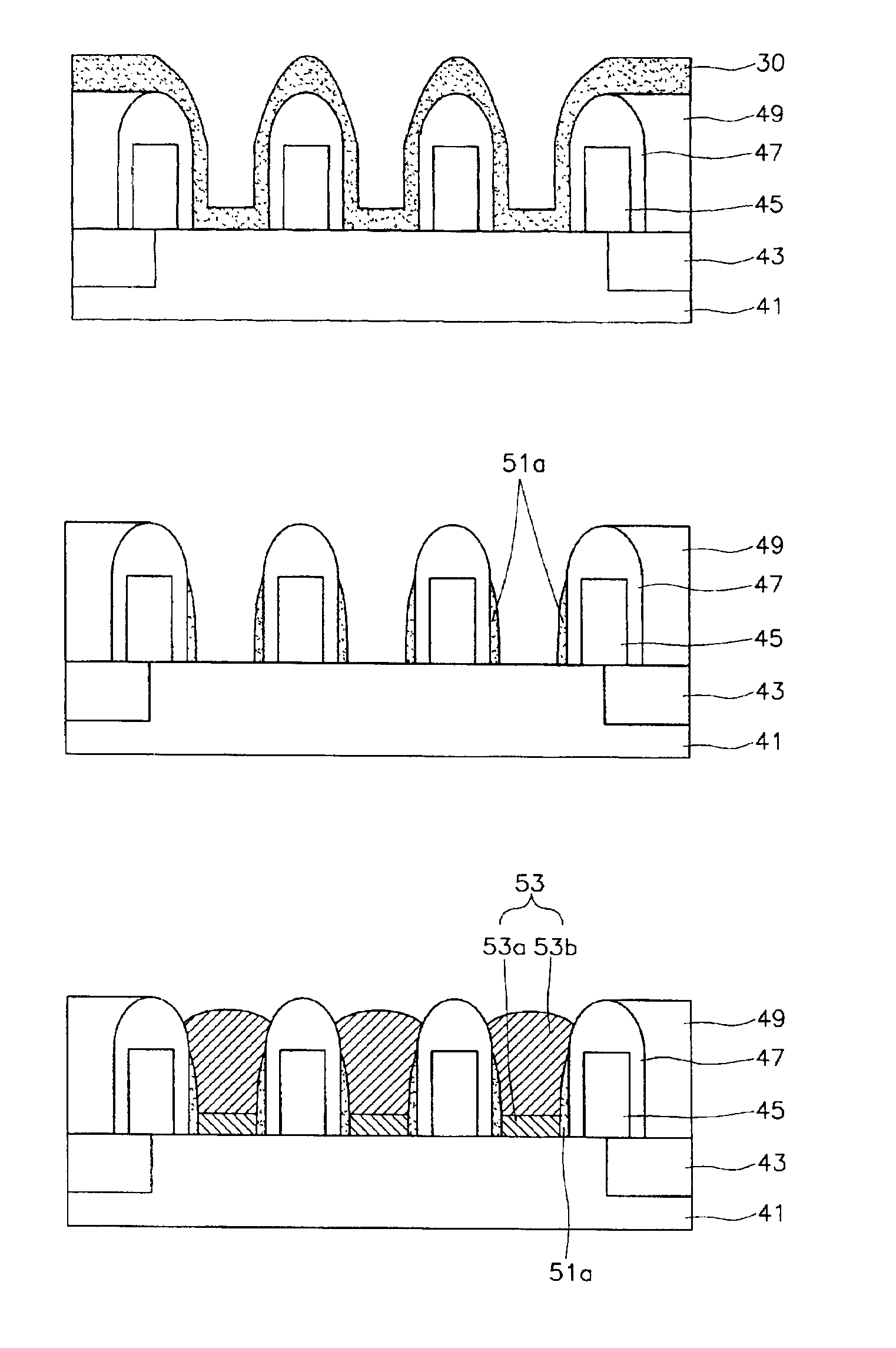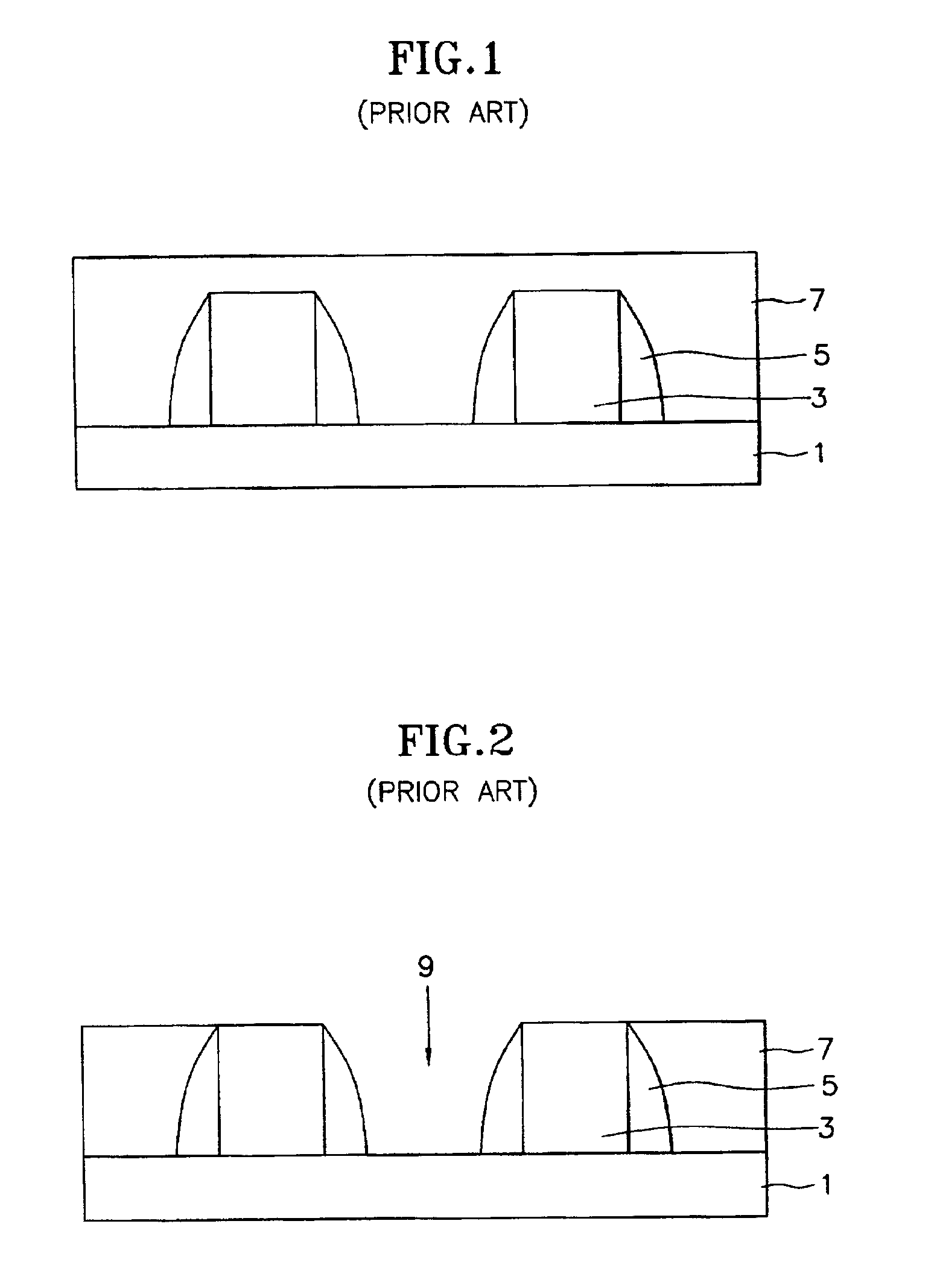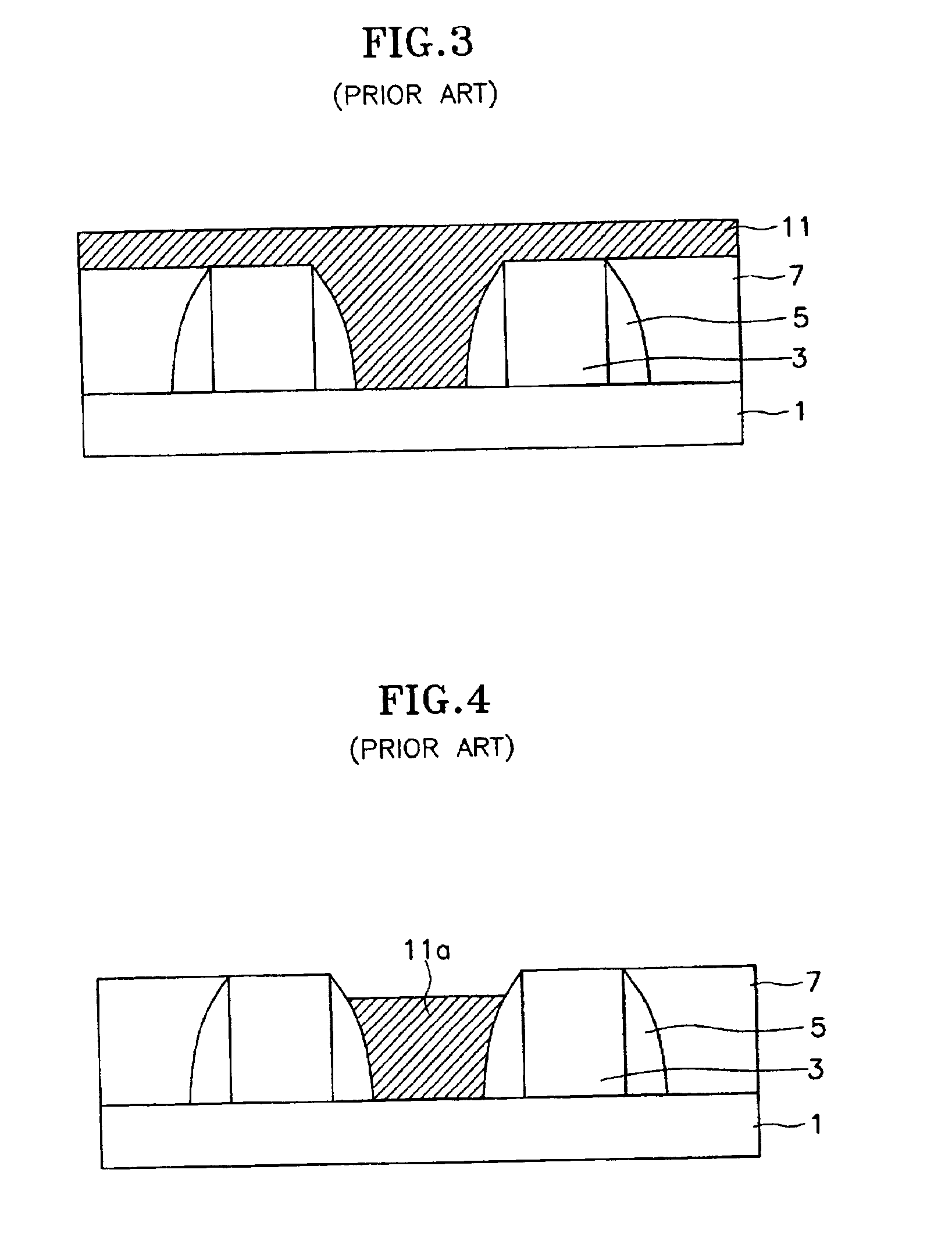Method of manufacturing of contact plug in a contact hole on a silicon substrate
a manufacturing method and silicon substrate technology, applied in semiconductor devices, semiconductor/solid-state device details, electrical devices, etc., can solve the problems of nitride materials having difficulty in achieving selectivity at temperatures below 850° c., selectively applying seg during plug formation, and reducing production costs. , the effect of reducing the contact resistance of the plug
- Summary
- Abstract
- Description
- Claims
- Application Information
AI Technical Summary
Benefits of technology
Problems solved by technology
Method used
Image
Examples
Embodiment Construction
[0064]Referring now to FIG. 5, first, a trench isolation layer 23 is formed to define a device active formation region and a device isolation region on a silicon substrate 21.
[0065]Subsequently, a gate insulating layer (not shown) and a gate structure 25 are formed on the device formation region of the silicon substrate 21 and an insulating layer, such as a nitride layer (not shown), is deposited on the silicon substrate 21, including over the gate structure. Then, the nitride layer is selectively removed by using an anisotropic etch process, the nitride layer remaining only on the upper part and side of the gate structure 25, thereby forming an insulating layer spacer 27.
[0066]Impurity junction regions for source and drain (not shown) are formed by implanting impurities on the lower parts of the silicon substrate 21 adjacent both sides of the insulating layer spacer 27 on.
[0067]Then, an insulating layer (not shown) is deposited on the resulting structure, including over the insulat...
PUM
| Property | Measurement | Unit |
|---|---|---|
| temperature | aaaaa | aaaaa |
| temperature | aaaaa | aaaaa |
| temperature | aaaaa | aaaaa |
Abstract
Description
Claims
Application Information
 Login to View More
Login to View More - R&D
- Intellectual Property
- Life Sciences
- Materials
- Tech Scout
- Unparalleled Data Quality
- Higher Quality Content
- 60% Fewer Hallucinations
Browse by: Latest US Patents, China's latest patents, Technical Efficacy Thesaurus, Application Domain, Technology Topic, Popular Technical Reports.
© 2025 PatSnap. All rights reserved.Legal|Privacy policy|Modern Slavery Act Transparency Statement|Sitemap|About US| Contact US: help@patsnap.com



